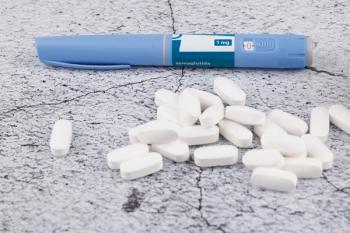
Pharmacy Technicians and Patient Safety: Your Role in Preventing Medication Errors

Pharmacy technicians play a vital role in ensuring the safety of medications in all pharmacy settings. While pharmacists oversee clinical decisions, it is the pharmacy technician who ensures the smooth and accurate processing of prescriptions, manages inventory, and prepares medications for patients. These responsibilities directly influence patient outcomes. Every label printed, every bottle counted, and every interaction with a patient can either contribute to safety or open the door to risk. Recognizing this critical position is the first step in elevating the technician's role in patient care.
By being detail-oriented, organized, and vigilant, technicians prevent potential errors before they reach the pharmacist or the patient. They often serve as the first line of defense, catching mistakes in prescriptions or identifying discrepancies in patient records. Their commitment to accuracy and efficiency plays a pivotal role in creating a safer healthcare environment. This role requires both technical skills and an unwavering dedication to the well-being of patients, underscoring that pharmacy technicians are indispensable to any healthcare team.
Common Types of Medication Errors in Pharmacy Practice
Understanding the kinds of errors that occur in pharmacy practice helps pharmacy technicians remain alert to the risks. Medication errors can range from incorrect dosages to dispensing the wrong drug entirely. Sometimes the errors are administrative, such as selecting the wrong product from a dropdown menu in a dispensing system or misreading a handwritten prescription.
Confusing drug names, illegible handwriting, and sound-alike medications contribute significantly to these mistakes. Errors can also happen when medications are stocked in the wrong location or when technicians are rushed or distracted. Knowing where these risks exist makes it possible to design systems and behaviors that prevent them. The pharmacy technician’s ability to identify, question, and correct anomalies is crucial to preventing these issues from escalating into serious patient harm. By staying alert and double-checking even routine tasks, technicians act as a powerful safeguard in the medication-use process.
The Importance of Effective Communication in Preventing Errors
Clear and timely communication is essential to a safe pharmacy environment. Pharmacy technicians frequently communicate with pharmacists, patients, insurance providers, and sometimes even prescribers. Each of these interactions presents an opportunity to clarify information, correct potential misunderstandings, or verify details that may prevent an error.
When pharmacy teams foster open communication, they reduce the likelihood of errors slipping through the cracks. For example, confirming unclear prescription instructions with the pharmacist or double-checking a patient’s allergy history can be the difference between safe medication use and a dangerous adverse event. Technicians who ask questions and share concerns create a culture where patient safety is prioritized over speed or convenience. Open communication also fosters trust among the team and encourages everyone to voice potential concerns, thereby further enhancing the safety net within the pharmacy.
Strategies for Accurate Prescription Verification
Prescription verification begins the moment a technician receives a script. Ensuring that all required elements are present and correct is essential. This includes confirming the patient's identity, as well as the name, strength, dosage form, and quantity of the medication. Technicians must also verify that the instructions are complete and legible.
Many successful verification strategies involve slowing down and focusing on one task at a time. Rushing increases the risk of overlooking important details. Using a consistent workflow, checking the National Drug Code against the prescription, and reviewing the patient's history can all help reinforce accuracy. Training your eye to spot irregularities and trusting your instincts when something feels off can significantly reduce the chances of dispensing errors. With each prescription, technicians have an opportunity to protect patients from potential harm and ensure that every dose delivered aligns with best practice standards.
Implementing Technology to Enhance Medication Safety
Pharmacy automation and information technology systems are powerful tools in the fight against medication errors. Barcode scanning, electronic prescribing, and drug interaction software are just a few examples of technologies that support technician accuracy and efficiency. When used properly, these tools reduce human error and enhance safety.
However, technology is not foolproof. It must be implemented thoughtfully and supplemented with human oversight. Pharmacy technicians play a vital role in ensuring that technology is used correctly. This includes understanding how systems function, identifying when a technological solution is not working as expected, and knowing when to escalate concerns. Staying current with system updates and undergoing regular training can further enhance the effectiveness of how these tools are used. The technician’s role becomes even more important in troubleshooting and recognizing when technology might introduce errors rather than prevent them.
Continuous Education and Training for Pharmacy Technicians
Patient safety depends heavily on the knowledge and skills of the people handling medications. Continuous education equips pharmacy technicians with the latest information on safety protocols, drug interactions, and best practices. It also enhances their awareness of the evolving scope of pharmacy practice.
Technicians who regularly participate in continuing education are more confident in their work and more likely to identify potential problems before they affect a patient. Training sessions focused on error prevention, communication skills, and emerging technologies can significantly reduce risk. Institutions that support technician development send a strong message about the value they place on patient safety. Ongoing learning allows technicians to stay current with regulatory changes and adapt to new responsibilities as the field evolves.
The Role of Teamwork in Reducing Medication Errors
A cohesive pharmacy team can greatly reduce the chances of medication errors. When technicians, pharmacists, and other staff work collaboratively, they create multiple layers of checks and balances. Mutual respect and trust allow team members to voice concerns when they notice something wrong.
Teamwork also means understanding one's role and relying on each other’s strengths. A technician’s familiarity with daily operations complements the pharmacist’s clinical expertise. Regular team meetings, shared responsibilities, and positive working relationships all contribute to a safer, more effective workflow. Teams that communicate and support one another tend to identify and address issues more efficiently, resulting in better outcomes for patients. This culture of teamwork not only minimizes mistakes but also boosts morale and enhances the overall quality of care provided.
Patient Counseling: Empowering Patients to Avoid Errors
Although pharmacy technicians do not typically provide in-depth counseling, they have frequent contact with patients and can play a crucial role in reinforcing their understanding of medication. Encouraging patients to ask questions, verifying the purpose of their prescriptions, and ensuring they understand how to take their medications can help prevent misuse.
Simple actions such as reviewing the label with a patient or reminding them to read the medication guide can make a significant difference. Educating patients on what to watch for, like side effects or drug interactions, empowers them to participate in their own care. When patients are informed and engaged, they are less likely to make errors after they leave the pharmacy. These moments of interaction help foster a patient-centered approach that supports safer medication practices across the board.
Reporting and Analyzing Medication Errors for Improvement
Reporting errors and near-misses is essential for learning and improvement. Pharmacy technicians are often the ones who witness or catch these issues, making their role in reporting crucial. Rather than focusing on blame, error reporting should be framed as a proactive step toward safer practice.
By analyzing error trends, pharmacies can identify patterns and implement changes that address root causes. This may include redesigning workflows, modifying medication storage practices, or providing additional training. When technicians participate in this process, they become active contributors to a culture of continuous improvement. Their insights from the front lines are often invaluable in shaping effective and practical safety initiatives.
Conclusion: Building a Culture of Safety in Pharmacy Practice
Pharmacy technicians are not just support staff; they are safety leaders within the healthcare system. By committing to accuracy, communication, collaboration, and ongoing learning, technicians significantly reduce the risk of medication errors and improve patient outcomes.
Creating a culture of safety requires dedication from the entire pharmacy team, but it often begins with the vigilance and initiative of technicians. Their close involvement in the medication-use process positions them to make a profound impact. Every action taken to verify, clarify, and communicate is a step toward safer pharmacy practice. By recognizing their role and embracing their responsibility, pharmacy technicians contribute to a system that prioritizes patient safety. When technicians are empowered and engaged, the entire pharmacy operation becomes more resilient, more responsive, and ultimately more effective in protecting patient health.
Newsletter
Pharmacy practice is always changing. Stay ahead of the curve with the Drug Topics newsletter and get the latest drug information, industry trends, and patient care tips.































































































































